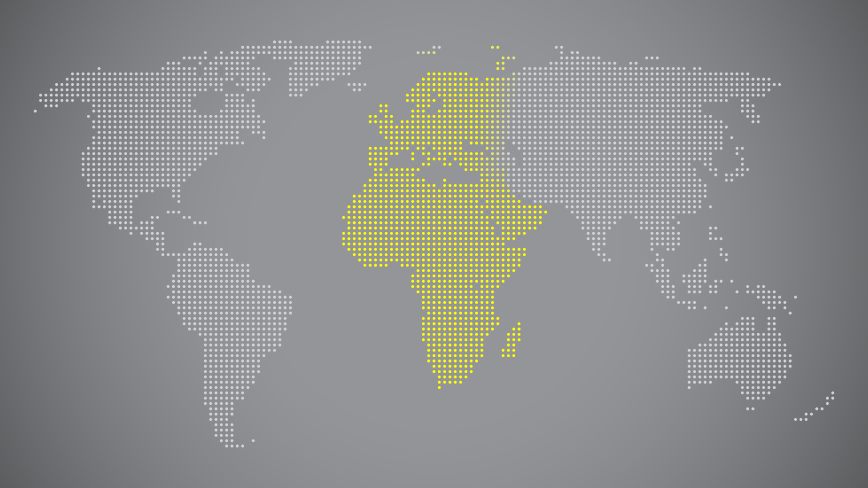Round out your worldwide marketing strategy with trends from the Middle East, Africa, and Europe; part two of our global marketing series.
By turning our perspective outward, we can often learn a great deal from others. Digital marketing is no exception; trends and patterns in the rest of the world can help brands strategize their approach to consumers, whether they’re found worldwide or just in one region.
Our last post kicked off this exploration, capturing the dominant trends in Latin America (LATAM) and the Asia Pacific region (APAC). This post continues the journey, delving into the most interesting trends occurring in the Middle East, Africa, and Europe.
So get out your notepad – but leave the passport at home – as we cover the remainder of marketers’ unique opportunities and challenges in their respective regions.
MENA (Middle East, North Africa) and Africa: Video, Influencers, and Digital
Video content and influencers are among the main trends for marketers to capitalize on in this region. However, digital marketing in developing areas remains a roadblock.
Video content:
The Middle East consumes the second-most video content to the United States, and smartphone users in the region spend around 40% of their time on devices in social media apps, such as Instagram and Snapchat.
This eager consumption makes video and social media two viable channels for distributing real-time, inbound-focused content as well as paid outbound advertising campaigns, especially when they’re connected for a multi-channel experience.
Peer recommendations and influencers:
In areas of extreme wealth, like the UAE, a need to demonstrate style and be “seen” fuels lifestyles revolved around conspicuous consumption. As a result, consumers, especially millennials, are drawn to trends driven by their peers. Over 70% of people will poll their friend group before making a purchase, and around half of purchases stem from peer recommendations.
As a result, many brands that collaborate with peer influencers have found tremendous success, earning a 38% higher retention rate than brands that only use traditional advertising approaches. Influencers even drive trends like healthy eating; 39% of Middle Eastern consumers report they eat healthy because it’s fashionable.
Digital roadblocks:
In some of the lesser-developed areas in Africa, digital marketing practices have difficulty gaining steam as only 27% of the continent has internet access.
Related challenges include the heavy use of feature phones, which lack full browsing capabilities, and proxy browsers, which compress web pages to use less data. Pages that aren’t designed to adapt present roadblocks for reaching consumers and delivering branded experiences.
EU and Other European Countries: Mobile and Privacy
As digital marketing is rapidly progressing across Europe, marketers taking advantage of this opportunity need to be wary of rules and regulations in the region.
Virtual reality hits a stride in Europe:
Interest in virtual reality has hit dizzying highs in Europe, from where many of the most recognizable VR developers and backers hail. Nearly 300 European VR companies exist, and around 20% of the world’s VR companies are based in the U.K. alone. VR creates a tremendous opportunity for brands to create immersive experiences and memorable interactions for their consumers in order to take their content marketing to the next level.
Digital consumption boom:
Mobile use in Western Europe is leading to a boom in digital media consumption. Current trends suggest that digital media will soon overtake time spent consuming traditional media like TV and radio in France and Germany. In the U.K., this shift has all but happened as the country spends almost half its time with media on digital platforms.
This landmark growth presents a huge range of opportunities for advanced digital marketing techniques to encourage conversions, lower customer acquisition costs, and deliver increasingly segmented experiences to high-value audiences. Digital ad spend has also outpaced TV ad spend by €7 billion ($8 billion USD), with emphasis on seamlessly integrated ad formats, like video and native ads, as opposed to overlays. Not surprisingly, spending on Facebook and Google platforms dominates.
Consumer protection:
At the same time, the specter of the EU’s General Data Protection Regulation (GDPR) rules coming into effect in May 2018 will turn any digital marketing efforts into trailblazers when it comes to setting up processes and defining standards needed for compliant, yet effective campaigns. These efforts could pay off greatly down the road as governments throughout North America and the world consider adopting similar protections for consumer privacy and data.
Conclusion: Global Trends Tell the Story of Digital Marketing Growth
Looking around the world, we see digital media consumption and deepening saturation of platforms like social media and video setting the stage for more engaging and precision-guided marketing campaigns. These campaigns could deliver messages with greater relevance while hitting the right emotional triggers that aim to convert high-value audiences on a consistent basis.
Data and analytics will show us the way, but the evolution of technology and digital infrastructures in developing nations, as well as future regulations in developed nations will no doubt steer the course.

